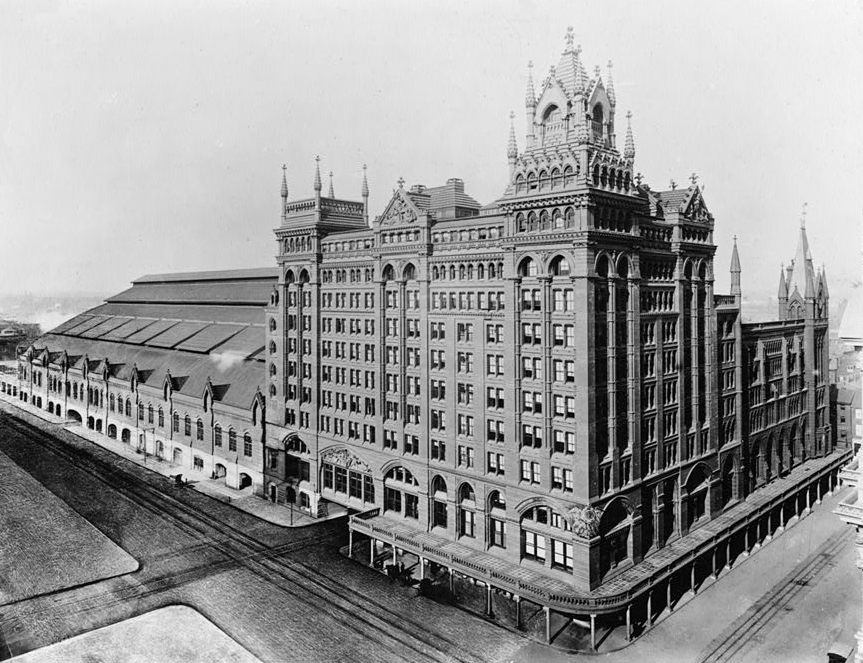 |
| West Philadelphia Station (Wikipedia) |
If your interest in hardware entices you to the East you can scarcely avoid passing West Philadelphia station on the Pennsylvania Railroad, a most ingenious junction where threads of traffic from all directions interlace at three levels. It was designed a century after William Rose forged the first American trowel on a spot just across Market street from the depot.
 Lancaster, Pa., was then “the west” and stagecoaches
thence met those from Baltimore in front of W. Rose’s door turning from the old
turnpike into Market, then called High street, on the last stretch of their
journey. Philadelphia was the capitol of the United States. George Washington
had just left it to pass into that retirement for which he eagerly had longed.
Then also war was paralyzing Europe. American ships were destroyed and this
encouraged Rose in his competition with more powerful manufacturers of the old
world. Thanks to the shifting character of building trades the stage coach
which rattled over the cobbles before William Rose’s door needed to carry no
publicity agent other than roaming customers who spread his reputation
throughout English-speaking America.
Lancaster, Pa., was then “the west” and stagecoaches
thence met those from Baltimore in front of W. Rose’s door turning from the old
turnpike into Market, then called High street, on the last stretch of their
journey. Philadelphia was the capitol of the United States. George Washington
had just left it to pass into that retirement for which he eagerly had longed.
Then also war was paralyzing Europe. American ships were destroyed and this
encouraged Rose in his competition with more powerful manufacturers of the old
world. Thanks to the shifting character of building trades the stage coach
which rattled over the cobbles before William Rose’s door needed to carry no
publicity agent other than roaming customers who spread his reputation
throughout English-speaking America.
A philosopher has claimed that loyal sons are more to
be desired than great riches. The heart of W. Rose must have warmed when his
boys began to take hold of his growing industry. Rudolph tempered the tools.
Wesley was a grinder. Joe assembled plastering trowels. William Rose Junior saw
that shipments were made and the wants of customers supplied. Older workmen in
the plant still recall how “Billy” would grab his hat and duck around a corner
when he saw approaching a customer with additional orders for his already
congested workshop. They still tell how the brothers would enter neighboring
taverns and seek to persuade their workmen to return and complete urgent
orders.
Need of more room drove the brothers to move first to
the northeast corner of Thirty-sixth and Filbert streets, and then in 1889 to
Sharon, Pa., the present location. There the buildings have been enlarged twice
in the last decade and the grunting engine complains loudly that a further
expansion is becoming imperative.
In order to conserve mechanical skill unusual efforts
are made by Wm. Rose & Bros. to decrease the frequency with employes change
their occupations, known in technical language as “the labor turnover.” Even
during such periods of depression as that which began in 1907 not a man is laid
off except for inefficiency.
Some attention is also given by Wm. Rose & Bros. to
housing mechanics and it is found that a man who has a chance to own his own
home does not become a floater.
No comments:
Post a Comment
Note: Only a member of this blog may post a comment.